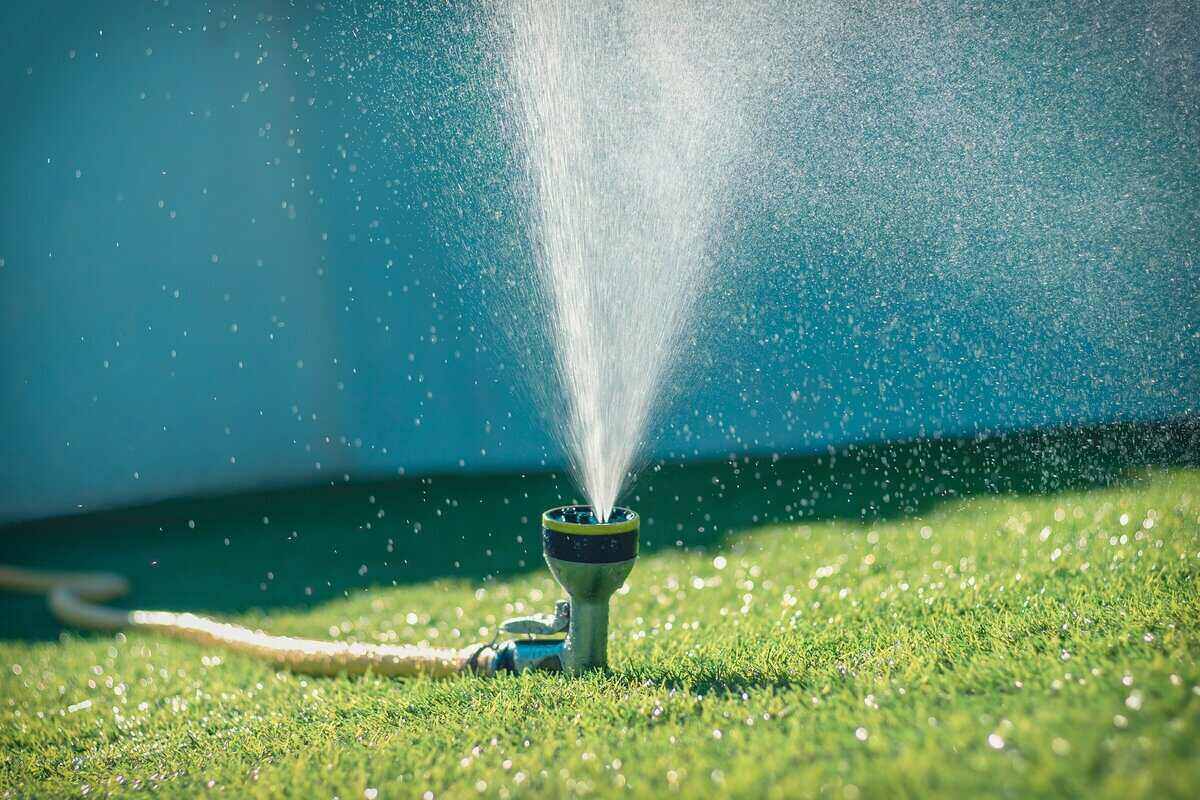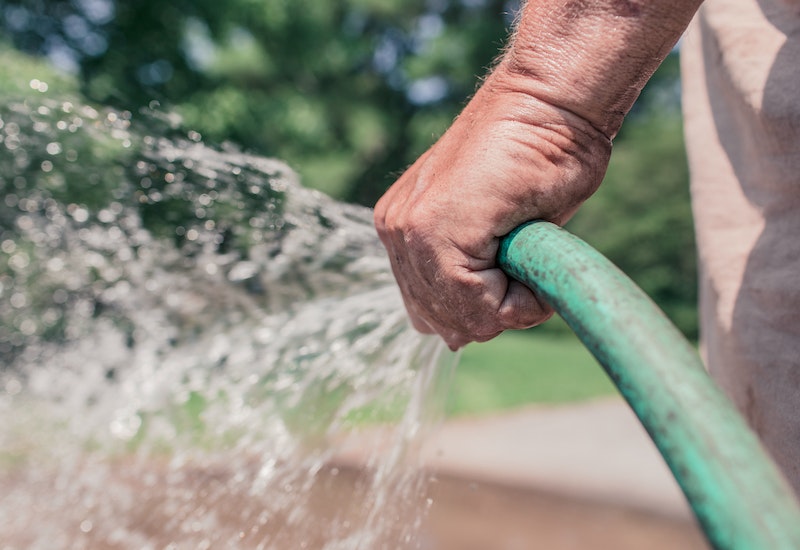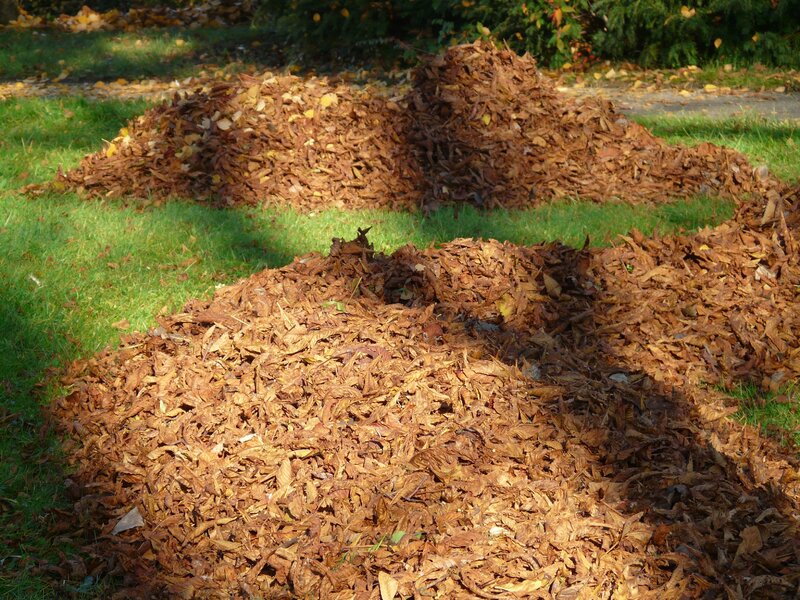
Each summer in Austin, Texas, feels like an endless heatwave, but that doesn’t have to mean an endless waste of water. By now, Austinities are pretty familiar with citywide water restrictions implemented to help conserve water during drought periods. So, how can you stay mindful of your lawn’s water use without ruining your grass? We’ve got some lawn watering tips to help you out.
On this page:
- Topdressing the Soil for Moisture Retention
- Timing is Key
- Be Aware of How Much You’re Watering
- Deep Waterings Over Shallow Sprinklings
- Aerate Your Lawn Regularly for Maximum Effectiveness
- Check Your Irrigation System
- Keep an Eye on Your Sprinkler System
- Mulch the Grass Clippings
- City of Austin Watering Restrictions
- FAQ
1. Topdressing the Soil for Moisture Retention
Regarding Austin’s soil types, the common thread seems to be that they’re often low in organic matter. This means the soil has a harder time holding onto moisture, meaning high temperatures and blaring sun can leave the soil dry as a bone.
To solve this, topdress your soil with an organic-rich compost or mulch to restore that essential moisture. Adding a bit of natural fertilizer to the mix is also a great way to increase your soil’s nutrient content and naturally boost its fertility. But be sure to choose a fertilizer with low nitrogen content, as too much nitrogen can make the grass grow faster and suck up more water.
2. Timing is Key
Early morning, before 10 am, is the ideal time to pour on the H2O since temperatures and wind speeds are lower. That’s when water is most likely to be absorbed into the soil and less likely to evaporate or blow away without ever reaching your grass.
As a general rule, it’s best to water your lawn no more than once a week. During spring and fall, your grass can go up to two weeks between waterings.
3. Be Aware of How Much You’re Watering

Be mindful of how much water you’re using to prevent waste and harmful overwatering. No more than one inch of water per week is a good rule of thumb – and that includes rainfall.
Usually, a good soaking of an inch is enough. However, depending on your Austin grass type, you may go up to 1.5 inches. For instance, a Bermudagrass lawn needs 1.5 inches during a typical summer week, whereas Zoysiagrass and Buffalograss only need 1 inch.
4. Deep Waterings Over Shallow Sprinklings
If you want your grass to be resilient enough to survive a scorching summer, its roots will need to dig deep into the soil. Watering deeply and infrequently will encourage the grass roots to grow deeper. Frequently watering with shallow pours can stunt growth and end up doing more harm than good.
Note that if you overwater your lawn, you may end up weakening the root system and depleting the precious oxygen that grass roots need to thrive and survive.
5. Aerate Your Lawn Regularly For Maximum Effectiveness

At least once a year, it’s a good idea to aerate your lawn by puncturing 6-inch holes to help increase the soil’s water absorption. Aeration will also help prevent flooding and runoff, as well as letting the vital nutrients get down to the deep roots.
6. Check Your Irrigation System
Run a checkup on your irrigation system come springtime and make sure there aren’t any leaking pipes or hoses that need repair. This way, you’ll double-check you’re getting the most bang for your water buck!
7. Keep an Eye on Your Sprinkler System
It’s important to check the alignment of your sprinkler heads regularly, particularly after you’ve cut your lawn. Make sure you replace any broken or clogged parts right away to prevent water waste.
8. Mulch the Grass Clippings

When you mow, don’t forget to mulch the grass clippings. Not only is this a great way to break down the clippings and return their nutrients to the soil quickly, but it’s also a natural way to reduce evaporation. Just be careful not to smother the grass with too many clippings!
City of Austin Watering Restrictions
For detailed information about the current watering restrictions in Austin and how you can maintain your lawn even during drought, see our helpful guide to lawn care under Austin’s watering regulations.
FAQ About Lawn Watering in Austin
It depends on the grass type and your sprinkler system, but a good general rule is to run the sprinkler for 30 minutes or one hour max, one day a week. In the fall and winter months, you may need to water less.
The most common types are warm-season grasses, such as:
• St. Augustinegrass
• Buffalograss
• Bermudagrass
• Zoysiagrass
Both are good options. Just make sure to avoid the 12:00 – 6:00 pm window when the sun is at its strongest. Early morning and late evening are the best times to water your lawn in Austin.
If you have an automatic sprinkler system, you’ll want to use a timer-activated sprinkler that suits the area you want to water. Hose-end sprinklers are great for smaller gardens, single-family dwellings, and commercial properties. Another option is the soaker hose, which works best for circular beds and vegetable gardens.
In addition to regular watering, aerating the soil and adding an organic-rich compost or mulch can make a big difference in the health of your lawn. Mowing regularly and mulching the clippings are also great ways to keep your grass looking lush and green.
Avoid common lawn care myths such as ignoring the lawn in winter, fertilizing only once per year, or trying cheap DIY aeration methods.
Final Thoughts
If you’ve made it this far, your head must be spinning with all the things to consider when caring for a lawn in Austin. But once you get the hang of it, it will become second nature. Plus, with all the benefits of a healthy and well-maintained lawn, you’ll be sure to reap the rewards and enjoy your outdoor oasis even more.
Don’t forget! Keep abreast of the city’s watering restrictions, use the right type of sprinkler, time your watering to the early morning and late evening hours, water deeply, and aerate the soil. And if you find yourself in need of professional help, then you can always call on LawnStarter’s Austin lawn care experts to give you a helping hand.
Main Photo by: Pixabay





